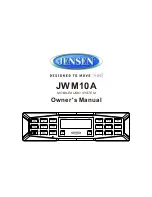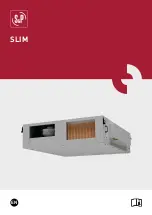
HEATIZON.COM
21
13.1.3 WIRING
1. Remove the cover with a small-blade flat head screwdriver by pressing the two slots on
the front-center of the cover.
2. Mount the unit using the four screw holes on each corner of the unit. Be sure that the
mounting location has taken into account:
• Incoming Power
• Proximity to sensor(s) (Extra wiring may be nessecary to extend sensor)
• Proximity to panel and/or heating element
3. Wire sensor according to diagram in 13.1A.
4. Wire connection to panel/heating element using the instructions from the panel and the
diagram 13.1B.
5. Wire incoming power (110V 15A) following diagram 13.1C.
6. Power on the unit and do an initial setup of the software: (using the dial to move the selection
up or down and pressing down on the dial to make the selection/ENTER)
• Choose Celsius or Fahrenheit (ENTER)
• Select ETOG (ENTER)
• Leave “Sensor 2” on the OFF setting (ENTER)
• Leave the “Outdoor Sensor” OFF (ENTER)
• Select “Electric 1-Zone” under APPLICATION (ENTER)
• On this screen, hit (ENTER) to enter the menu, then scroll down to “Setup”
• On the setup menu, scroll down to “Afterrun 1” and hit (ENTER)
• Default for After run is 2 hours, it is advised to adjust this to a longer time period (3-4
hours) and then dial back from there based on the performance of the system. Once
complete, hit (ENTER).
• Scroll down to “Exit” and hit (ENTER), the initial setup is complete.
7. Run an test run of the system to see if everything is working properly.
• To run a test of the system hit (ENTER), scroll down to the “Setup” screen and then select
“Force Heat,” hit (ENTER). The internalrelay should click on and the panel(s) should activate
as well. After both the panel and activator have powered on, with “force Heat” still selected,
hit (ENTER) again to deactivate the activator.
8. After testing is completed. The system can be powered off during the non-winter months, but
being sure to completely power on the activator and panel(s) before the first snow and leave
powered on for the entire season.
9. Make any adjustments nessecary to activator as required for optimal effecticeincy for the given
application.
• During warmer times of the year, the heating element may not heat enough to be
able to determine if it is working properly, therefore the test run is to merely check
to see if the activator/panel power on according to their operating procedures.
Running another test or checking settings once snowfall has occurred.
• It is NOT recommended to change the default activation temperature.
NOTE:
Once powering on the unit, if the ALARM light blinks at any point
during or after setup, check signal and sensor wiring connections.










































